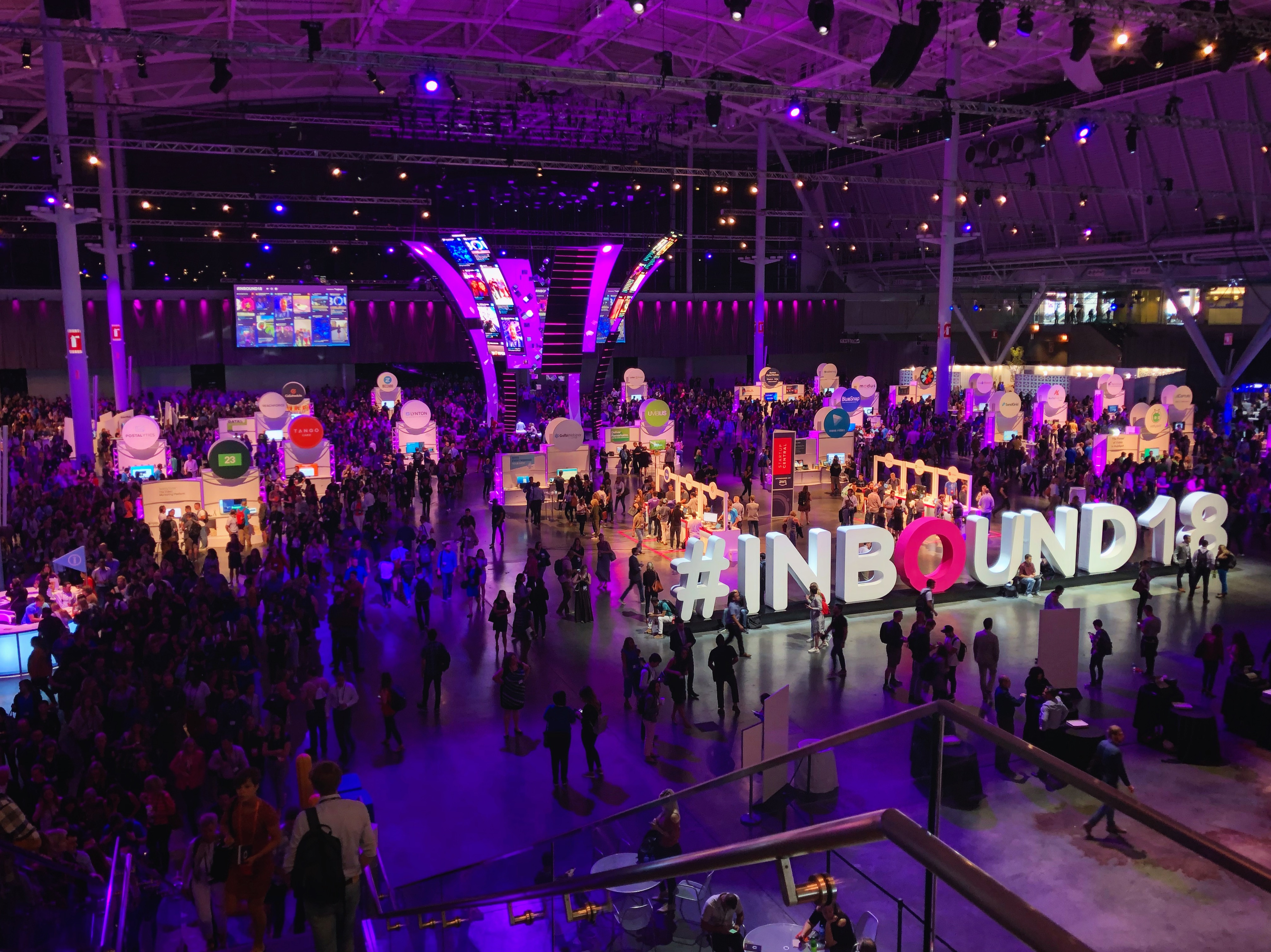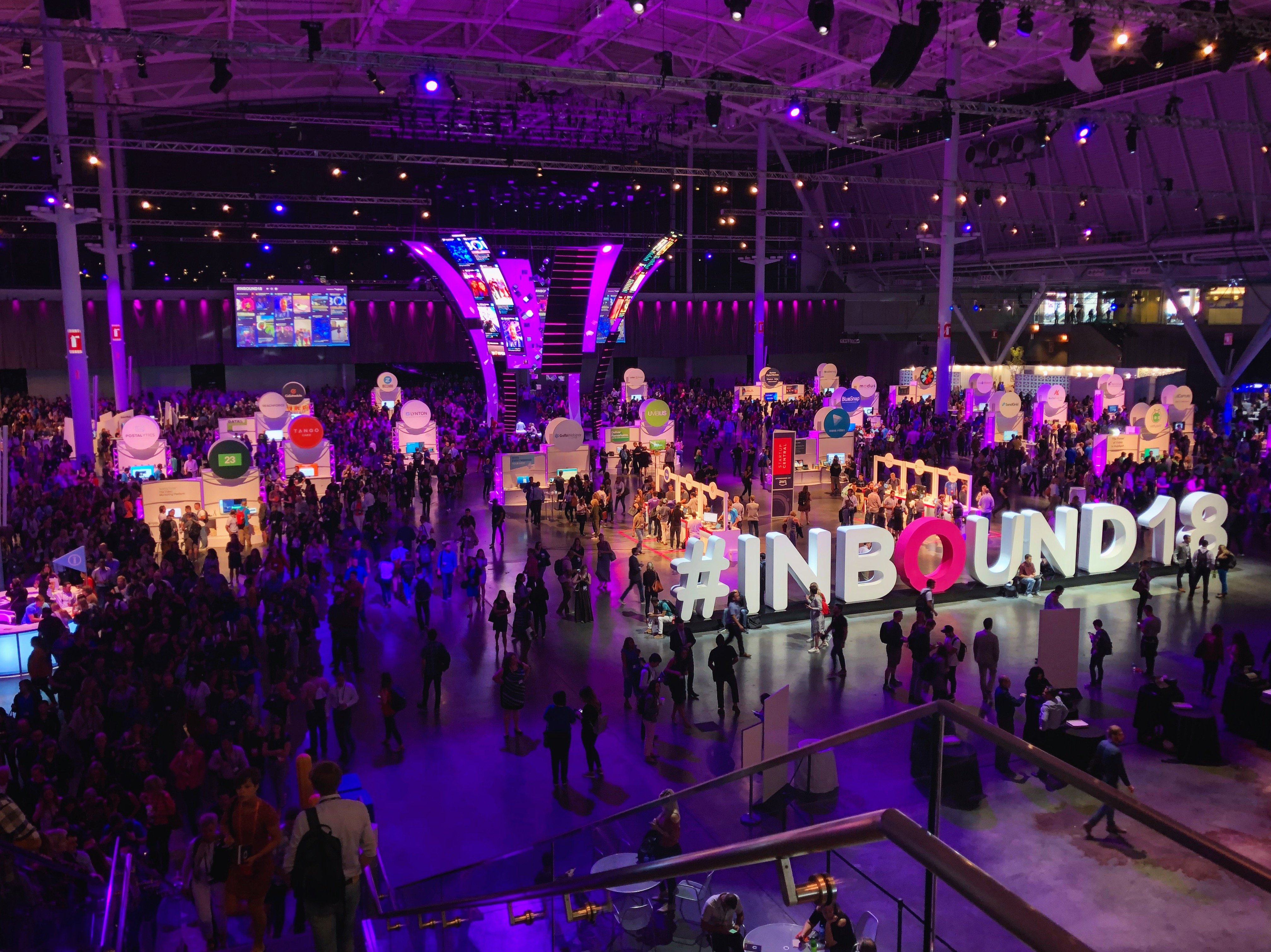Missouri Marketing Resource Blog

Recapping The INBOUND 2018 Conference

A few weeks ago, we were privileged to, once again, head to Boston for the annual INBOUND conference. Per usual, it did not disappoint. This conference is always a chance for us to brush up on the fundamentals of inbound marketing, learn about recent marketing developments, discover cutting edge technologies, and network with some of the world’s most renowned digital thought leaders.
With an abundance of keynote talks, spotlight speeches, and hourly sessions, it’s safe to say our heads were spinning with all of the information we were hearing. We’ve compiled a list of our favorite quotes and takeaways below. We hope that these also provide some valuable insight to your business!
From Melanie Deziel’s session, “How To Create Better Brand Stories.”
- We must recognize that our audience’s needs may not be the same as what we want to give them; therefore, we have to make sure that any content we create is worthy of their time.
- It’s not our job to tell our audience what to think or how to feel, but we must show them and have them paint their own conclusions.
- Make your customers “better” customers by teaching them about your business/industry.
- Create a healthy tension in your content/advertisements. For someone to care about a story, there has to be something at stake.
- People relate to people. Charts and statistics don’t mean anything to people. It’s hard for them to see themselves in that.
From Paul Roetzer’s session, “How To Get Started With Artificial Intelligence in Inbound Marketing.”
- Don’t be intimidated: “AI” is simply the umbrella term for tools and technologies that make things “smart.”
- Machine learning is where most of AI is happening = Natural language processing, natural language generation, computer vision, facial recognition (Ex. Amazon recommending purchases, Netflix recommending what to watch)
- 80% of what we do will be intelligently automated in the next 3-5 years.
- AI-derived business value will grow by $3 trillion by 2021.
- AI solves problems and achieves goals more efficiently than traditional marketing technology. Any tool that isn’t infused with AI in the next 5 years will be obsolete.
- Good news, though! Your job probably isn’t at stake. The future is marketer + machine. AI enhances human knowledge and capabilities.
- Success with AI requires data, intensive machine learning (by humans) and ongoing experimentation.
- You can train your machines/tools to practice AI now. (Ex. IF visitors register for INBOUND, THEN send them a three-part email campaign.)
- 3 Steps to Get Started:
- Evaluate repetitive manual marketing tasks that could be intelligently automated.
- Assess opportunities where you can get more out of your data, then discover insights and predict outcomes, then devise strategies.
- Consider the AI capabilities.
- Personalization is the main AI area of focus for today’s marketing and sales teams. Examples:
- Engage users in conversations through bots and chats
- Optimize email send time
- Recommend highly targeted content
- Adjust digital ad spend
- Identify social media and news trends
- Moderate comments at scale
- AI has the potential to make brands more human, but AI adoption in marketing is still very early. It’s very hyped and there is a lot of jargon swirling around. Even Fortune 500 companies are not fully doing this stuff yet in their marketing teams.
From Brian Halligan and Dharmesh Shah’s (HubSpot Founders) Keynote Talk.
- Sales must be focused on delighting customers over closing customers. That’s the key to growing your business in 2019 and beyond.
- If you’re in B2C, you need to get 90% to all of the friction out of your business model. (iPhones have given people zero patience. Your customer experience must be 10x LIGHTER, not better, than the competition.)
- 3 Tips to get the friction out of your business model:
- 20% if your interactions should involve interaction with humans (The model has flipped).
- 80% if your IT investments should go towards making your customer more efficient.
- Employees should only handle heavier, more intense customer service cases.
- It used to be that the best product won. Now, it’s the best customer experience.
- Keep the acronym, SFTC = “Solve for the customer,” always at the forefront of your mind.
- Our goal is to help our customers succeed. We don’t want to just satisfy them; we want to delight
- Improving your experience 10x is much easier than improving your product 10x.
From Alex Rodriguez’s Spotlight.
- “I’m ranked fifth in the world for strike outs. Ultimately I have a PHD in failing, but I also get back up. We’re all going to strike out, but who will have the grit and character to get back up and say, ‘Yes I can.’”
- “Today’s kids keep getting smarter. I’m in awe and inspired by the next generation.”
- “My super power in baseball was that I was really good at the fundamentals. In business, it’s the same way. You need great fundamentals and a great attitude. You’re either giving something to the party or taking something away. Your CEO should not have to motivate you to do your job. Your attitude determines your altitude.”
- “You have to put teams together that make sense. You need complementary people filling your office.”
From Marcus Sheridan’s session, “7 Keys To Creating Content That Dramatically Moves The Sales and Marketing Needle.”
- Trust is the building block of all businesses. It’s the tie that binds and this will never change.
- 7 Keys To Creating Quality Content That Converts Into Sales:
- Openly talk about the negative.
You can address your customer’s hard questions or not, but know this ... someone will.
- Share your “not-so” secret sauce!
Never undersell the power of teaching. If you produce what they’re concerned about, you’ll see the consumption rates of your content explode!
- Embrace our review-obsessed society.
The Google search, “Product reviews,” has increased by over 35% in the last 2 years.
Consumer ignorance is no longer a viable sales and marketing strategy. Don’t treat people like they’re dumb. Treat them like they’re informed. They deserve to know what’s possible.
- Make it personalized.
When was the last time someone in your audience said, “You did this for me?” You can make them feel that!
- Unleash the power of the self-selection and self- configuration.
The Google search, “For me,” has grown by 35% in the last 2 years; the Google search, “Should I,” has grown by 60% in last 2 years. Businesses should be aware of this mindset when creating content and marketing materials.
- Focus on the money.
The moment your business is not transparent about your pricing, you plant a seed of doubt. People are going to search costs on Google - Will your business come up when they do?
- Show it; don’t say it!
Find creative ways to show consumers that you have a good culture. Make consumers want to do business with you because of what they have witnessed/heard.
We hope that your business has found some worth in our INBOUND 2018 notes! Until next year, Boston!

